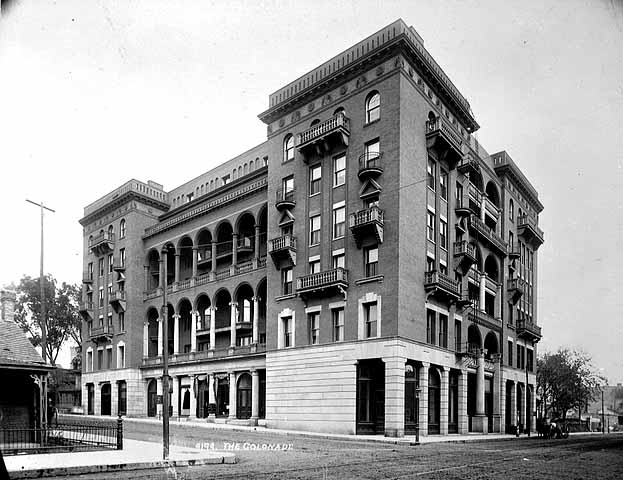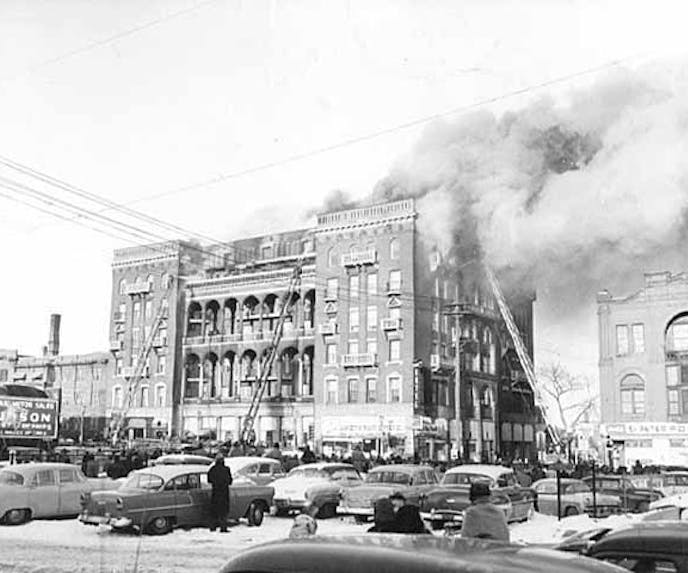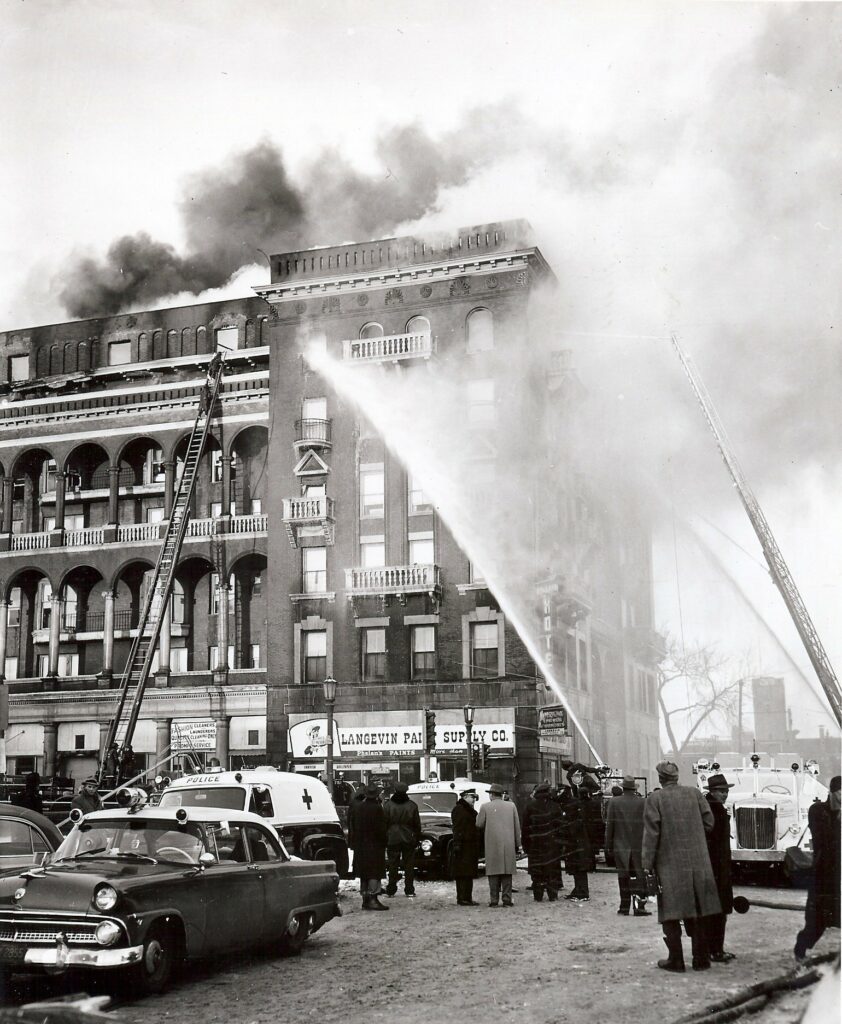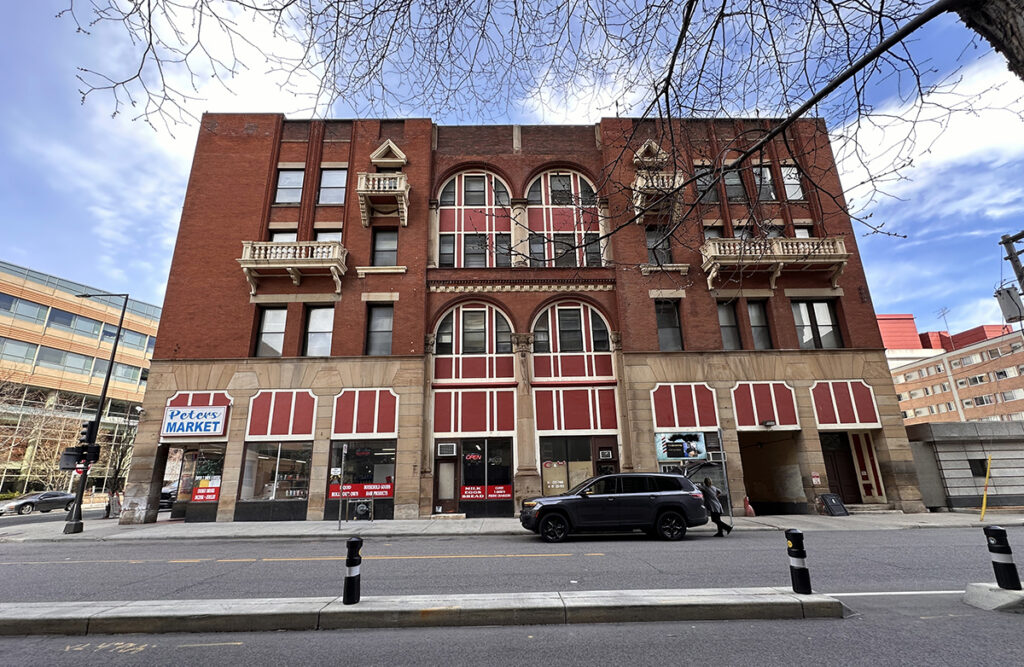It may have been luck that spared the Colonnade Hotel the same fate as so many other old downtown buildings. Lucky residents were careful with their cigarettes, candles, fireplaces, and ashes. Lucky that fires in other buildings didn’t spread. Lucky the gas lines were safe.
That luck ran out shortly before 2:45 p.m. on Tuesday, December 13, 1955, when a fast-spreading fire broke out on the upper levels of the apartment building. Many of the building’s 200 residents were at work, mainly leaving women and older residents at home that afternoon.
William Baugus, his wife, daughter, and mother-in-law, lived in apartment 611. They were all enjoying an afternoon at home while a workman stripped the hardwood floors that needed to be refinished in their bedroom. The man had applied a coat of stripper and smoked a couple of cigarettes while waiting for the chemicals to work. He soon felt a great deal of heat at his back and turned around to see a fire. The man hurriedly told the family about the fire and told them to get out.

We must warn them
Black smoke and flames quickly spread to the fifth and fourth floors. Realizing what was happening, two of the building’s staff sprung into action to warn residents and make sure everyone got out. Sylvester Davis, maintenance, ran up to the sixth floor and shouted to residents to get out quickly. Augusta “Gussie” Heasley, the maid, started alerting people on the lower levels.
Davis became trapped on the sixth floor with an elderly resident in apartment 606 as Heasley took the elevator to the fourth and then fifth floors, warning residents to hurry outside. She hadn’t seen Davis come downstairs, so she took the elevator to the sixth floor to alert residents and find Davis.
Against all warnings not to go, she got into the elevator. She told a crowd of onlookers, “I’ve just got to warn those people and make sure they’re all out.”
A first-floor business owner who had seen Heasley enter the elevator became concerned when smoke began settling in the lobby. He raced to the fourth floor to find Heasley but could climb no further because of the heat and smoke. He called for her. She screamed back, “I’m caught! I’m caught! Please help me.”
He quickly ran downstairs as firefighters arrived on the scene and told them Heasley was trapped in the elevator and others were still in the building.

A hero pays the ultimate price
Fire crews set to work, knocking down the flames. They noticed an elderly man hanging from a window on the sixth floor. It was the man that Davis had dragged to the window as he became trapped. Firefighters extended their ladder as far as they could and rescued the man. Davis was found on a nearby balcony and was also rescued.
Other rescuers had barely snatched a woman from a wooden balcony on the sixth floor when fire and smoke burst through the window she’d climbed out of and set the balcony ablaze. Everyone was out of the building except Heasley.
About 30 minutes after Heasley had gotten in the elevator to go to the sixth floor, fire crews had broken into the elevator shaft, doused it with water, and fought through the smoke to open the elevator. Heasley was found on the floor unconscious. She was rushed to the hospital but declared dead upon arrival.
Her selfless bravery undoubtedly saved many lives that day, but at the highest price possible. She was recognized by all as a hero.

Stunned silence
The investigation into the cause of the fire started as soon as the fire was out. As residents and onlookers stood on the street in stunned silence, William Baugus told police his story about the workman in his apartment. After searching the crowd for the man, investigators found him at home and brought him in for questioning.
At first, the man denied knowing how the fire started. Then he admitted that as he was working, he’d been smoking. When he was done with a cigarette, he’d squeeze the tip to make sure it was out and then toss the butts into a pail with used rags. Those rags were saturated with turpentine. He claimed that this “may have been careless” because when he’d turned around after feeling the heat on his back, the pail was engulfed in flames that were spreading rapidly along the floor where he’d just laid a coat of varnish stripper.
Investigators were curious about where he’d gone after alerting the Baugus family about the fire. He told them he’d run through the hall to the back fire escape and down before most residents even knew what was happening. He then went into the basement, changed clothes, and went home. When asked why he didn’t stay and try to help, he admitted that he was “awfully afraid of fire.”
He was held at the police station overnight and released. There’s no further record of him in newspapers.

A lucky break
As the shock from the fire and Gussie Heasley’s death wore off, people in Saint Paul wondered what would happen to the old Colonnade building. Its top floor was ravaged by smoke and flames, and the fifth floor was also significantly damaged. The lower floors had been lucky, only suffering slight water and smoke damage that could be cleaned up. Engineers determined that the top two floors could be removed, and the building would remain structurally sound.
So the two upper floors were removed, the mess cleaned up, and life went on at the Colonnade. While many other buildings built in the late 1800s were being demolished for far less, the fire-ravaged Colonnade would, somewhat unbelievably, have a future. The building still stands at the corner of Tenth and St. Peter.

Comments are closed.